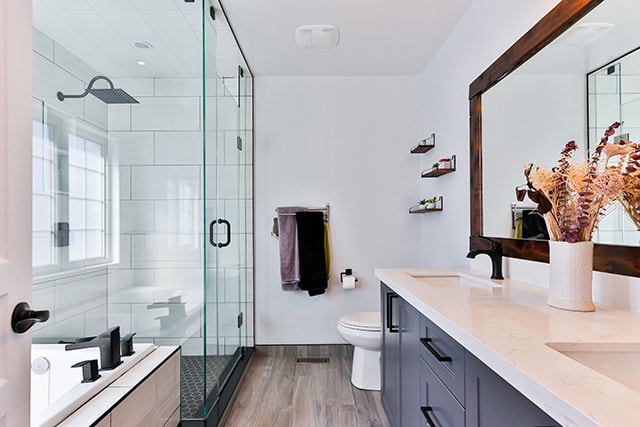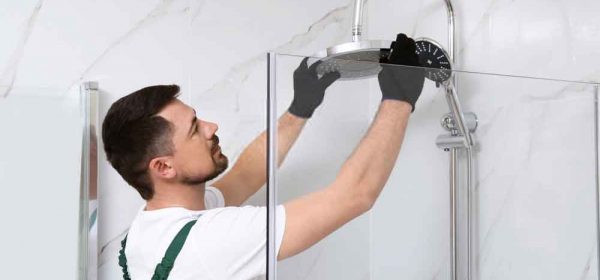5 Acrylic Washroom Troubles and also Solutions
5 Acrylic Washroom Troubles and also Solutions
Blog Article
{This Post The article following next about Finding the Right Plumbing Expert is incredibly captivating. Have a go and draw your own final thoughts. We recommend that you clean your acrylic bathing product made of Delta ProCrylic or Acrylic with Innovex Technology with non-abrasive soaps and cleaners, such as: When it’s time to clean, always use a terry cloth towel, soft cloth or sponge to avoid scratching the acrylic surface. Don’t use abrasive scrubbing pads, steel wool or sponges, cause permanent damage to the acrylic material. If you use a drain cleaner or clog remover, be sure to rinse thoroughly with water so no product is left standing near the drain. Some chemicals and cleaners may deteriorate acrylic surfaces, causing cracks and, potentially, property damage. To avoid this, don’t use cleaning products that state on their label that they are not suitable for use on Acrylic, ABS, Polystyrene or Plastic. Be sure to check the label of any product before you apply it to the surface; it’s easier to avoid damage than to try to remedy it. Chemicals we do not recommend using to clean acrylic showers/tubs: When you’re ready to apply sealant, a little planning goes a long way. Pick up some painter’s tape and use it to mask off the seam to help make cleaning up easier. When you’re applying the bead, use a constant, steady speed to avoid an uneven finish. Use a caulk tool or a plastic spoon to work the sealant into the joint. Wetting the tool with denatured alcohol will help create a smooth finish. Follow the directions on the back of the tube for cure time. Certain chemicals and cleaners may deteriorate acrylic surfaces, causing cracks and, potentially, property damage. After you’re finished applying it, clean up the product surface and remove any excess sealant with denatured alcohol. Don’t use solvents (turpentine, lacquer thinner, mineral spirits, paint thinner, MEK, xylene, acetone, naphtha, etc.) that can wreak havoc on an acrylic surface. With a little care and consideration, you can prevent damage to your acrylic shower or tub. Keep a supply of soft cloths handy and remove any damaging products or abrasive scrubbing items from the bathroom to ensure they aren’t around when it’s time to clean. https://www.deltafaucet.com/design-innovation/inspiredliving/how-to-clean-acrylic-shower We were shown that write-up on Hiring a Plumbing Company through a good friend on our other website. Don't hesitate to take the opportunity to share this blog post if you enjoyed it. We recognize the value of reading our article about Things To Look Out for Before Hiring a Plumbing Company.
Acrylic bathrooms, shower trays, and other acrylic shower room ware have ended up being a lot more typical in restrooms in current times. Thanks to modern chemistry we currently have options to enamel as well as ceramic products for bathroom components. These consist of different polers as well as plastic materials. Though not as stylish and long lasting as enamel and also porcelain bathrooms and also components, they are much more economical as well as serve practically the very same basic function. These materials are very easy to manufacture, shop, and also transportation and also in the occurrence of damage, they are quickly repaired. Some typical instances of damages to acrylic restroom fixtures consist of discoloration, splits, holes, and so on. Allow's take a look at a few of these troubles and quick methods of repairing them.Scratched shower or bath surface area
Polymer restroom components are not abrasion-resistant like enamel selections. They are much more vulnerable to scrapes and less resilient. Being a really soft product, acrylic scratches can even be hidden without layer or filling. For these, you ought to seek expert aid for your bathroom repair work. As a prevention tip, prevent making use of abrasive sponges when cleaning. Instead, you ought to utilize a basic fluid cleanser with a soft pad.Chemical Reactions
In some cases, individuals attempt to repaint the entire surface of their acrylic bath on their own either because they do not such as the shade to hide imperfections. Nonetheless, when they do not such as the outcome, they apply paint removers. You ought to never use paint remover on acrylic bathrooms. Although paint eliminators do not react with the surface area of steel bathrooms, they damage acrylic baths irreversibly. This develops even more help the expert. The best strategy here is to call an expert for help with replacing the bathroom.Bath Staining
With prolonged use of acrylic bathrooms comes staining or discoloration. While some stains can be eliminated conveniently, utilizing unique chemicals, others need that the bath be resprayed. Aromatherapy oils loosen up the dust in some cases therefore bring back the bathroom to its former splendor.Broken Polymer Baths
The life-span of acrylic and also fiberglass bathrooms depends on 15-20 years for shower frying pans and bathrooms, generally. Cracks in an acrylic shower tray are most likely among the most convenient troubles to fix for a repair service professional. The most effective component is you get to see the results practically right away. This is the same for PVC, material, and other such products. A minute fracture should be attended to promptly before it spreads more leading to a lot more extreme damage. While these can be chosen a budget plan tackily, a professional can help you get it finished with more finesse for a fee. Quick house solutions can be finished with epoxy resins however if the outcome ends up poorly, this would make the repair much more difficult for an expert.
Acrylic bathrooms, shower trays, and various other acrylic washroom ware have ended up being much more common in bathrooms in recent times. You should never ever utilize paint remover on acrylic baths. Paint eliminators do not respond with the surface area of metal bathrooms, they ruin acrylic baths irreversibly. With extended usage of acrylic baths comes staining or discoloration. The life expectancy of acrylic and also fiberglass baths is up to 15-20 years for shower frying pans and baths, typically.How to clean Acrylic shower
USE THESE NON-ABRASIVE CLEANERS
DO NOT USE THESE CLEANERS
Sealant Application Tips

Book Maintenance